Always check your hoses before The Big Road Trip
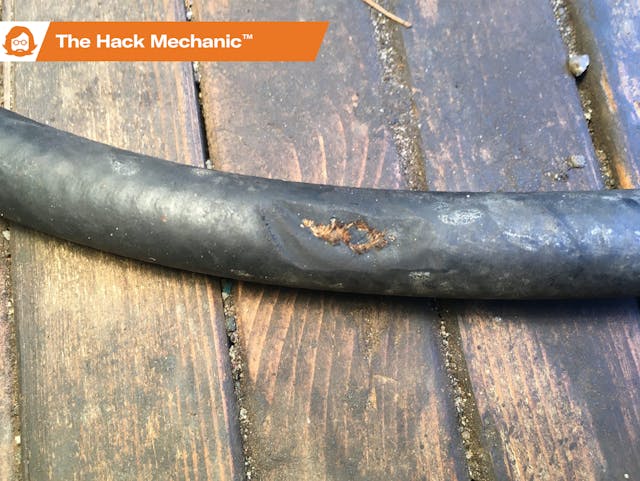
I repeat it over and over to the point where it’s almost a mantra—the “Big Seven” things most likely to strand a vintage car on a road trip are fuel delivery, cooling, ignition, charging, belts, clutch hydraulics, and ball joints (with thing #0 being, of course, a flat tire). As part of dealing with the first two, give all the rubber hoses a visual inspection and a squeeze. If they’re pillowy soft or rock hard, replace them. It’s simple and highly effective. My own advice once again proved to be spot on, though I almost missed two crucial issues by not following it closely enough.
The BMW event “The Vintage” has been held in North Carolina around Memorial Day since 2003. I’ve gone every year since 2010. In 2020, however, like many events it was canceled due to the pandemic and then rescheduled several times for 2021. As the confirmed date of September 18 was fast approaching, I needed to choose a car and prepare it.
As I’ve written before, I own six 1970s-era BMWs—three 2002s, a 1973 3.0CSi, a ’73 Bavaria, and a ’79 Euro 635CSi. My heart will always be with the more primitive early ‘70s cars, but the 635CSi easily takes the crown as the best interstate inhaler. The fact that it’s simply a generation newer with better window sealing and climate control is certainly a factor, but beyond that, the car is just way better planted at highway speeds due to a combination of size and weight and the presence of the front air dam. Whatever the magical combination of parameters, the big shark stays dead on center and doesn’t require constant steering input on a crowned road like some of my other cars. And its factory Recaro seats are heaven. Plus, it just looks mean going down the road.
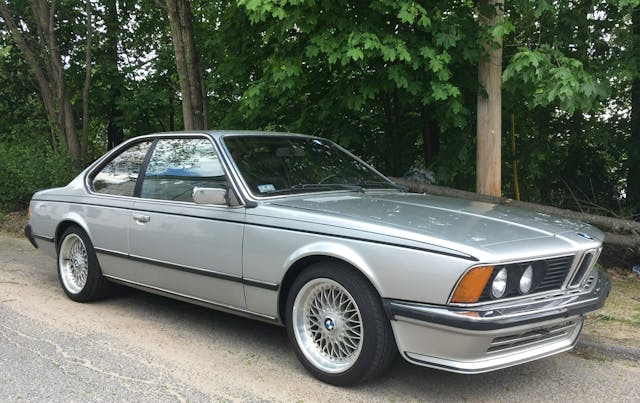
There were two other reasons to take the shark. First, saying that the car is stellar on interstates is another way of saying that it’s primarily a touring car. There’s absolutely nothing wrong with that, but it also means that it’s not really a car I jump into for a pleasure drive. If I want to stress-bust, I’ll take a spin in one of the lighter, nimbler cars like the Lotus Europa or the BMW M Coupe or one of the 2002s. If I don’t road-trip the 635, it just winds up sitting, and during the pandemic, with all events canceled, it sat a lot. I seriously flirted with selling it. So, if I wasn’t going to drive it to The Vintage this year, the whole question of keep vs. sell was certain to raise itself again.
Second, with the rising values of my rust-prone 3.0CSi, my 2002tii, and even my Bavaria making me shy about taking them on 2000-mile road trips, where they’re almost certain to see rain, the shark’s condition falls into a nice niche where it’s perfect for a trip like this. Although the value of BMW E24 coupes have increased, particularly early Euro cars like this one—with the close-in bumpers, the air dams, and the factory striping—mine is never going to sell for all the money. The car’s beauty is, to some extent, skin-deep; evidence of repair of a front-end collision can be seen in the smoothing of the inner fender walls, and if you look low on the car at the undersides of the rear clip, bondo is apparent. Plus, it lost its Euro-only M90 engine and close-ratio dogleg five-speed during its tenure with a previous owner. And there’s the car’s 218,000 miles. But all those demerits add up to a car that is unabashedly a driver, and that’s a good thing. I’m not afraid of getting it wet and won’t have a conniption fit if I get stuck behind a gravel truck on I-81.
As luck would have it, my wife and I were planning to visit some friends in southern Vermont. I figured the 350-ish mile trip would be the perfect shakedown for the shark. I drove the Bavaria to my storage space in Fitchburg (in central Massachusetts), where the 635 had been sitting for months, swapped cars, and brought the shark home. A temperature gauge that pegged high was cured by swapping instrument clusters (it makes me absolutely crazy to drive a car with an incorrectly functioning temperature gauge).
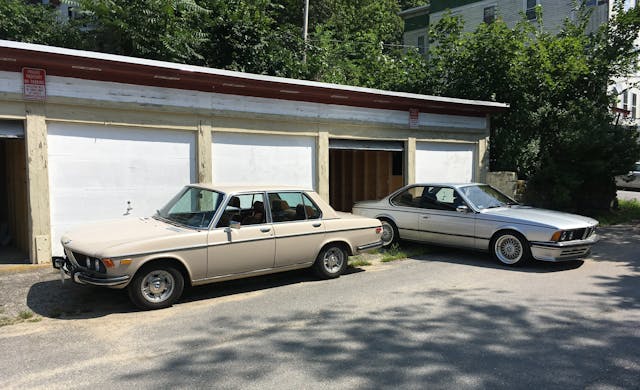
I inspected and squeezed the easily accessible coolant and fuel hoses under the hood and found them to be fine. Then I put the car up on the mid-rise lift to check the fuel lines at the back. I found that the big 12×18-mm rubber line from the tank to the input side of the fuel pump was softer than I would’ve liked—nowhere close to aortic-aneurism-that’s-about-to-kill-you soft, but soft, and likely original to the car. The other smaller fuel lines back there were a mix of BMW and aftermarket hose, all likely replaced, some of them a bit hard but not cracked, and all of them secured with a mish-mosh of assorted hose clamps, something I probably wouldn’t have done (I really like using clamps that can all be undone with the same flex nut driver), indicating that I probably hadn’t ever performed preventive maintenance on this part of the fuel system. I felt fine taking the car up to Vermont, but I wanted to change the big soft fuel line before the long trip to Asheville and back. I ordered it, along with two meters of smaller 8x13mm hose, a fuel filter, and an electric fuel pump.
The big coupe was fabulous on the drive up to Manchester, Vermont. A nice mix of interstate and two-lane highways reminded me of the car’s capability and made me look forward to the trip to The Vintage. The only thing that went wrong was that the A/C blower fan began working only on high—the textbook symptom of the resistor pack or its related wiring not functioning correctly. Fortunately, it was just a loose spade connector.

When the fuel hoses arrived, I put the car back up on the lift and inspected things carefully. The first thing I saw made me laugh out loud—the rubber hanger holding the back of the muffler to the hook on the underbody of the car was completely missing. I don’t consider exhausts part of “The Big Seven,” as you can always cajole them into hanging there with a coat hanger (always keep one in your trunk, as it’s both a part and a tool), but obviously I dealt with it. I couldn’t find the proper rubber donut in my box of exhaust-related spares, so I pressed a hose clamp into service.
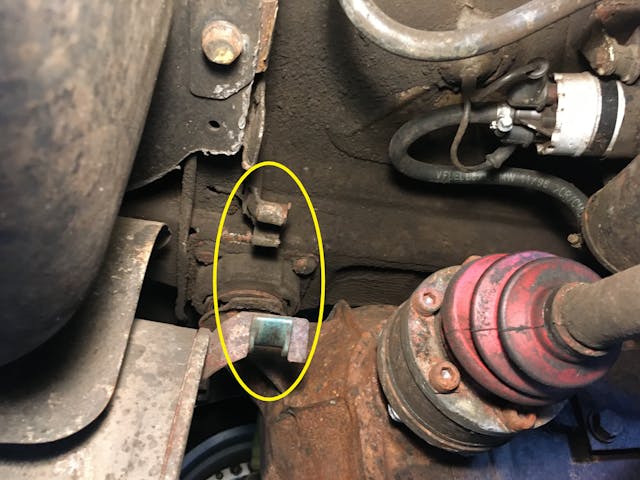
Back to the fuel hoses. The fat 12×18-mm hose is difficult to replace, as it runs through a narrow channel between the body and the top of the gas tank. I squeezed it again. It was a little soft, but not so mushy that I could feel internal breakdown between its multiple layers. The other hoses were mismatched, but in no way dangerous. And, since there’s the fuel pump, the filter, and an expansion canister, there are quite a few hoses and clamps to change. I couldn’t recall replacing the fuel pump or filter, but they didn’t look decades old. A bit of denial mixed with laziness began to wash over me. I began to think, “It’s probably fine.”

But then, I saw something that changed everything—a serious abrasion of the fat fuel line that went clear through the outer rubber and exposed the braided cloth layer. Suddenly, “This will be a pain to replace; it’s probably fine” flipped to “There’s no way I’m driving on this; I know what I’m doing for the next several hours.”
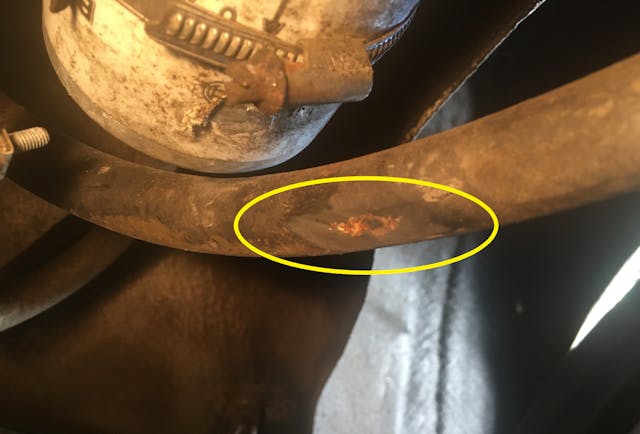
The abrasion was odd because it was in a location where nothing was rubbing against it, at least nothing I could see. It was too high up to be caused by a rotating half-axle. And, with the recent episode of the mouse-infested truck, I did wonder if it was perhaps rodent-induced, but it didn’t look like it was made by biting or clawing.
I pulled the hose out and was able to inspect the abrasion more closely. It was even worse than I thought. In one spot; it was worn through the cloth braid and into the inner rubber.
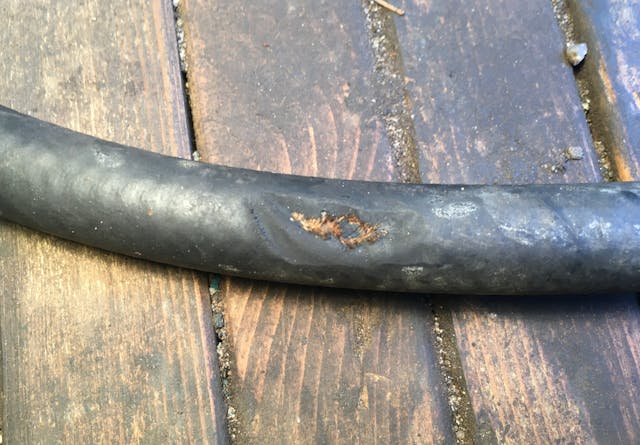
Then I had to deal with getting the new hose in. Even coating it with dishwashing soap, I couldn’t slide it through the narrow channel in the body. I wound up loosening the bolts that held up the gas tank to drop it down slightly, and even then, I needed to use a coat hanger—as I just said, it’s a part and a tool—to help guide the end of the fuel hose into position.
The rest of the work went quickly enough: new hoses, new filter, new uniformly sized clamps. I thought seriously about installing the new fuel pump that I’d bought as a spare, as it would never be easier to replace than right now, but I decided that keeping it as a spare for the several of my cars that share that part was a better plan.
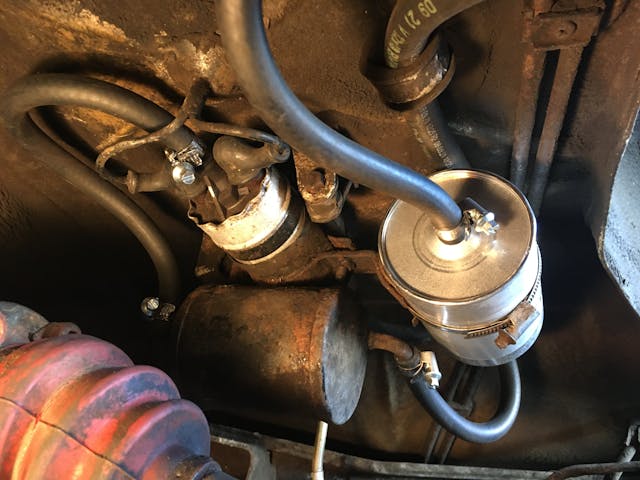
With that done, I couldn’t help but wonder if I’d missed anything else. I’d given the car a cooling system refresh—new radiator, water pump, thermostat, expansion tank, viscous clutch, fan, main hoses—a few years back, but “main hoses” doesn’t mean “all hoses.” There’s a tendency to ignore heater hoses, as on a front-engine rear wheel-drive car they’re buried between the back of the engine and the firewall, and they usually last several times longer than the radiator hoses that are subjected to more heat, wind, and oil.
This is what I found. The ends of the hoses, where they attach to the heater box, were ballooning over the hose clamps like a fat man’s belly over his belt. When I squeezed them, they were icky squishy, clearly feeling like they had inner delamination between the rubber and cloth layers.

Unfortunately, these hoses appear to be on backorder from BMW, and there wasn’t enough time before my scheduled departure to source aftermarket ones from a vendor. I found a pair of new old stock OE heater hoses on eBay and clicked “buy” just to get them on route, then hunted around in my spare parts and found a pair of very good used 2002 heater hoses with the same size inlets and outlets. The bends weren’t the same, but I made them work. They should be fine, but I’ll bring the original hoses as spares.
As I said a few months back about doing preventative maintenance on my RV, while cars—particularly older ones—can die at any time, the causes are usually common ones. What makes you really feel like an idiot is when you ignore a known problem and then have that very problem be the cause of an inconvenient and expensive stranding. I could’ve easily missed these two hose issues—hell, I did miss them on the first once-over. If the 218,000-mile 635CSi dies on the trip to Asheville and back, at least it’ll be because of something else.
***
Rob Siegel’s new book, The Best Of The Hack MechanicTM: 35 years of hacks, kluges, and assorted automotive mayhem, is available on Amazon. His other seven books are available here, or you can order personally-inscribed copies through his website, www.robsiegel.com.

